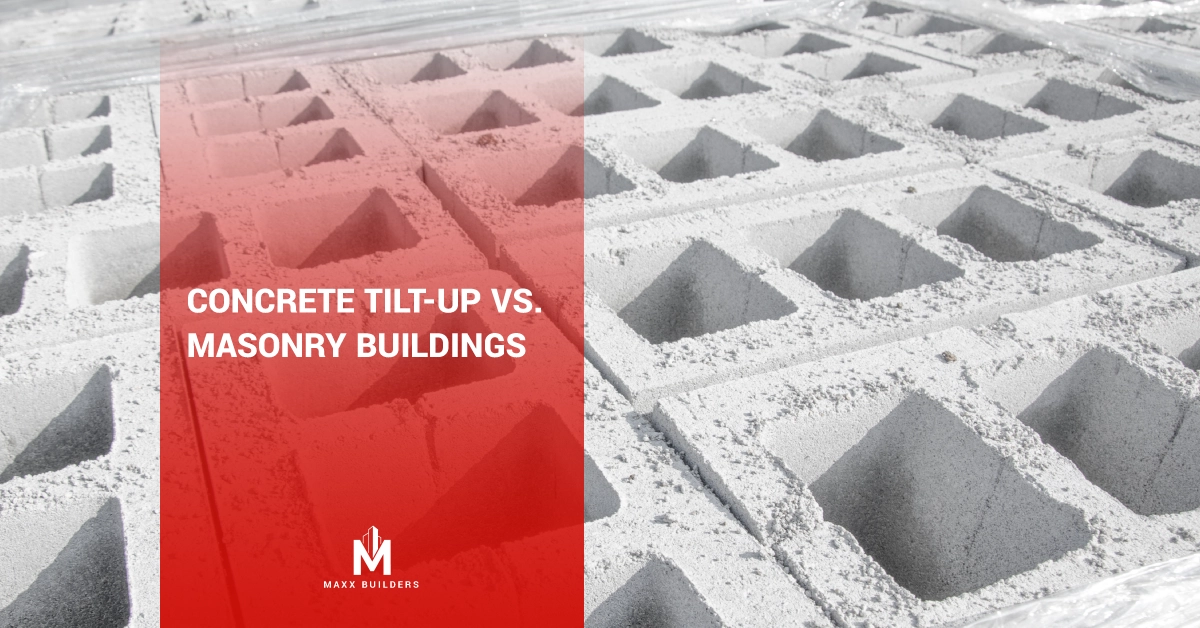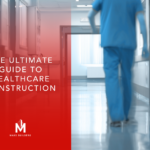Commercial Construction: Concrete Tilt-up vs. Masonry Buildings
In commercial construction, architects, engineers, and investors often debate the merits of concrete tilt-up versus masonry buildings. Each method brings unique advantages and challenges, crucial for project success. We aim to explore these methods in detail, offering insights for industry stakeholders.
Delving into Concrete Tilt-up Construction
Concrete tilt-up construction casts large concrete panels on-site, which crews then lift into position to form building walls. This method stands out for its construction speed, cost-effectiveness, and durability, making it ideal for warehouses, distribution centers, and large commercial buildings. Its efficiency and the ability to create vast, open interior spaces make it a preferred choice.
Benefits of Concrete Tilt-up
- Quick Construction: Crews can fabricate tilt-up panels while performing other site work, cutting down on project time.
- Economical: Lower labor needs and minimal formwork make tilt-up construction cost-effective.
- Durable: Tilt-up buildings withstand severe weather, ideal for hurricane or earthquake-prone areas.
- Energy-Saving: Concrete’s thermal mass insulates well, lowering heating and cooling expenses.
Tilt-up Construction Challenges
- Space Needs: The method requires significant space for panel casting, a potential issue in urban settings.
- Design Flexibility: Despite advancements, tilt-up may offer less architectural flexibility than other methods.
Exploring Masonry Construction
Masonry construction uses individual units like bricks, stones, or concrete blocks, bound by mortar. This method is valued for its aesthetic appeal, fire resistance, and soundproofing qualities.
Masonry Construction Advantages
- Design Variety: Masonry provides diverse textures, colors, and finishes for architectural expression.
- Fire Safety: Non-combustible materials offer excellent fire protection.
- Thermal Efficiency: Masonry’s thermal mass regulates indoor temperatures, enhancing energy efficiency.
- Noise Reduction: Dense masonry walls effectively block sound, useful in loud environments.
Masonry Construction Challenges
- Higher Costs: Masonry can be more expensive and labor-intensive, especially for complex designs or premium materials.
- Slower Process: Masonry takes longer than tilt-up due to individual unit placement and curing.
- Structural Support: Larger masonry buildings might need extra support, increasing complexity and cost.
Tilt-up vs. Masonry: A Comparative Analysis
Choosing between tilt-up and masonry involves considering budget, timeline, design needs, and location. Tilt-up offers speed and cost efficiency for large projects, while masonry excels in architectural versatility, often chosen for its aesthetic appeal and craftsmanship.
Project Considerations
- Budget: Tilt-up can save costs on large projects; masonry may suit smaller, detailed projects better.
- Timeline: Tight schedules may benefit from tilt-up’s quick construction.
- Design Ambitions: Masonry’s variety suits projects needing high architectural expression.
- Location Factors: Local climate and material availability can influence the choice between tilt-up and masonry.
Conclusion: Making the Right Choice
Deciding between concrete tilt-up and masonry construction requires careful consideration of your project’s specific needs and goals. Both methods offer distinct benefits for achieving optimal project outcomes. Understanding each method’s characteristics and applications helps stakeholders make informed decisions that align with their project vision.
For buildings under 6,000 sq. ft., masonry might be more economical if crane time for tilt-up proves costly. In areas lacking tilt-up expertise or cranes, masonry often prevails. Conversely, in regions where concrete and labor are inexpensive, and tilt-up resources are available, tilt-up may be the more economical choice, especially for large projects. High-clearance buildings over 24 ft. typically find tilt-up more cost-effective due to incremental wall thickness increases, unlike masonry, which requires larger block sizes.
For fire resistance, an 8-in. solid-grouted concrete block wall matches a 6½-in. concrete wall’s four-hour rating. If not solid-grouted, it drops to a two-hour rating, akin to a 5-in. concrete wall. Concrete walls generally offer denser, less porous barriers than masonry, which may require sealing against water ingress. Tilt-up buildings, especially large ones with repetitive panels, can be erected swiftly, often enclosing a 60,000-sq-ft. structure in four weeks.
FAQs: Concrete Tilt-up vs. Masonry Buildings
What sets concrete tilt-up apart from masonry construction?
Concrete tilt-up uses large, on-site cast panels lifted to form walls, offering quick, efficient construction for big projects. Masonry builds from individual units like bricks, providing design versatility and durability.
Which method costs less?
Tilt-up generally costs less for large-scale projects due to faster construction and reduced labor. Masonry might be pricier due to its labor-intensive nature, especially with high-end materials or complex designs.
Can masonry buildings endure severe weather?
Yes, masonry buildings are highly durable and can withstand extreme weather, thanks to the robustness of materials like brick and stone.
Are tilt-up buildings energy-efficient?
Yes, the thermal mass of concrete in tilt-up buildings aids in maintaining stable indoor temperatures, reducing energy needs for heating and cooling.
How do design options compare?
Masonry offers a broader range of design options with various textures, colors, and finishes. Tilt-up has improved in design flexibility but is often seen as more functional in appearance.
Which construction method is faster?
Tilt-up construction typically finishes faster, especially for large projects, as panels can be prepared alongside other site work. Masonry takes longer due to the individual placement and curing of units.
Choosing between tilt-up and masonry construction depends on your project’s unique requirements, including budget, timeline, and aesthetic goals. Both methods have their advantages, tailored to different construction needs.
Partnering with a knowledgeable construction firm like Maxx Builders ensures your project’s success, whether you prefer the efficiency of tilt-up or the traditional charm of masonry. Our expertise spans both construction methods, guaranteeing precision, efficiency, and attention to detail.
Embarking on a construction project? Let Maxx Builders turn your vision into reality. Contact us today for a construction quote and learn how we can bring form, function, and cost-effectiveness to your next project.



